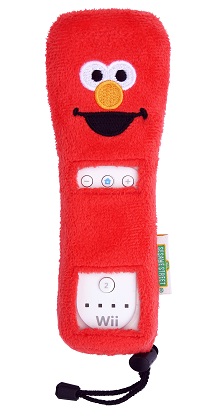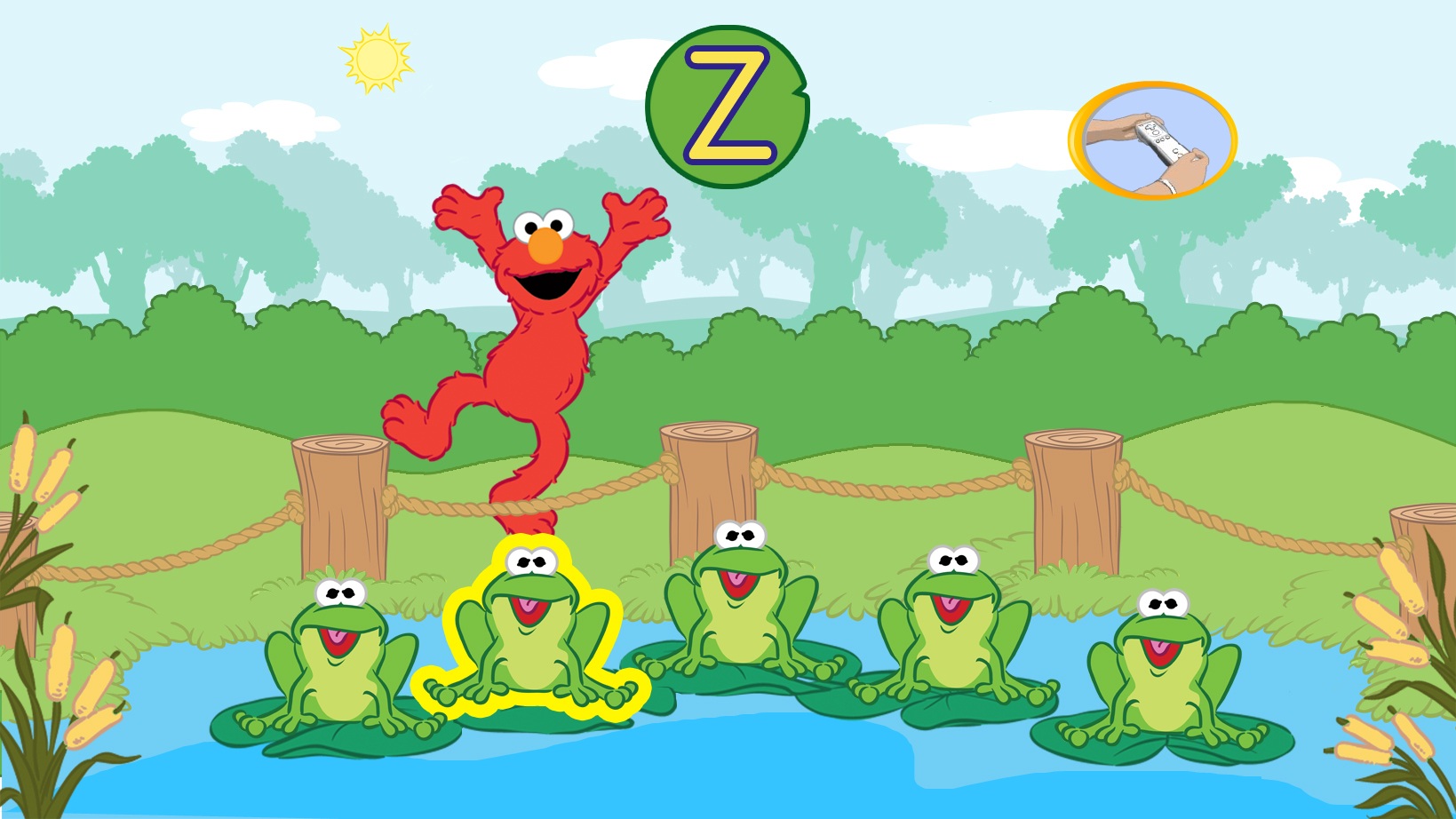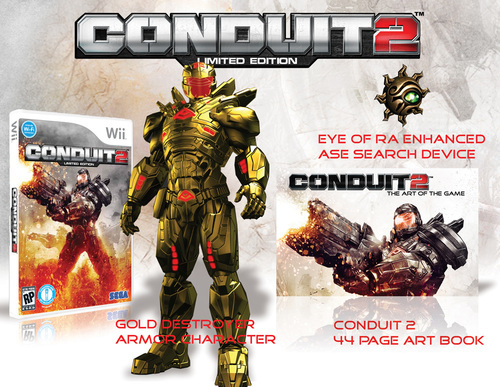Sesame Street has been a well known brand of children’s television for roughly two generations and millions of Americans, but most of the licensed video games haven’t lived up to the reputation of the brand. Warner Bros is looking to change all of that with a pair of new titles designed to teach kids developmental skills (check out the Ayzenberg produced trailer at sesamestreetvideogames.com). We talked with Jeff Neinstein of WB’s kids game group about these new products.
Give us a general overview of where you all are coming from with educational games.
The easiest thing to say, and we’ve said this to our buyers and sales team, is that this the first generation of parents that grew up as gamers and they want to share that with kids. And as the father of a preschooler, I wanted to share my passion with my son, but there’s nothing on the market appropriate for that. A lot of [consumers] feel so too, so the time is right for something that can provide educational value for children along with fun.
Parents give their kids the iPhone as a digital babysitter [but we think] it’d be better to engage with kids on more than an entertainment level. We wanted to have a brand that meant something to parents and there’s nothing more recognized and loved than Sesame Street so it was the ideal property for us to work with. It seemed like the perfect opportunity for this category of product and the platform of the Wii and the DS, that has a wide install base and good penetration with families.
Why the Wii and DS in particular?
A lot of parents buy these consoles as things for their kids to play. Many have younger kids and they want to play the games but don’t have the proper development skills yet. We have something that parents have indicated they wanted via focus testing. They’ve said “Finally there’s something there for my kid to play.”
We’ve got two products. Cookie’s Counting Carnival is all about numbers and pattern recognition. There’s also Elmo’s A to Zoo Adventure, which is all about letters and color identification. We wanted to start out with the basics, since they targets the 3-5 age group. What a 3-year-old can do and what a 5 can do is pretty different, so it was developed for a 4- year-old skill level. It can also adapt itself to make the puzzles more challenging or it is able to provide a more simple challenge if the child is getting them wrong.
The other thing to consider for these games is what a child can do with a stylus is limited compared to their older sibling. It’s not only the puzzles, but also the design has to be built for children. A child will be challenged to holding a Wii Remote using the IR sensor, so we built the game to be used with two hands. I try to stress this, if you hold out your middle three fingers, that’s about the size of their hand, so it’s important to build the game around something they can handle.
One might think it’s easy to teach numbers and letters, but we needed to be smart about it. We hired some experts in this, someone who had a PhD in children education, asking them what were their abilities and what was a four-year-old able to do that a three-year-old can not do. Once we had a firm understanding with that, we had a consultant help guide us.
Talk to me about marketing for educational titles in general.
Certainly, when you put together a marketing plan, you plan the basics of who you’re targeting, whether it’s print or online. The thing that we learned most from moms, is they want the education in the game. It’s great that [the kids] get entertainment, but the parents wanted to find out what their child learn. We want to convey the value of the products to mothers. It’s in the rhyming, the identifying shapes and numbers, and building core skills, and that’s one of the key messages. We focused on getting it out to moms, game demo sessions with moms and the mommy bloggers that are very influential, showing them that it’s good for their children and informing others who may not have the time for research.
I say moms, but it’s dads as well, and so many more dads are gamers, but it’s focusing primarily on the moms. There are also grandparents that are influential as well; so many grandparents are taking care of their kids and it’s important for them to hear the messages. They grew up with turning on Sesame Street for their kids so they have a connection to it too.
Tell me about working with the Sesame Street brand in particular, and the advantages and limitations it offers.
Sesame Workshop was very involved with this. They evaluated all the software, the way we were teaching and were very helpful in making it consistent with the Sesame style of learning. For instance, we don’t say, “It’s wrong, try again” and we had to be cognizant of leading children to the answer if they chose the wrong thing. For instance, if a child was playing a matching game to find a circle and getting it wrong, the game will say, “No that’s a square, look for the circle.” or “No that’s a triangle, look for the circle.”
We’ve had an excellent relationship with them. We’re considered a mission based product, fulfilling the development skills of children and helping them build self confidence that’s fundamental to Sesame. That’s helped us open some doors. Because we have this mission status, it allows us to work closely with them. Sesame team has been around 40 years, and it’s more relevant than ever. They’ve got some well known celebrities on and they’re targeting adults as well, because it’s so witty. So we are the next game licensee on board and it is more relevant than before. There have been [Sesame St.] games previously, but now they’re more accepted into the household. Their educational research group is very supportive of the direction we’re going and they’re talking to the moms themselves as opposed us doing it on their behalf.
One of the most rewarding things is seeing a child about three years old trying to identify a shape, and through the guidance she got it, and she smiled. For a three-year-old to solve the puzzle, the level of accomplishment is tremendous; it’s good for the child and parent.
I’ll bet that really impacts you now being a dad.
As a father, I’m looking at things with a new pair of eyes. When a young mind is able to put these pieces together, it’s a great thing to see.
How is Sesame helping with the marketing?
WB distributes the videos so that’s provided a lot of synergies for marketing.
Did that open the door for the games to be made in the first place?
There was a relationship between the two companies which helped. Looking at the success of games like Scribblenauts, they saw us as providing great value in fun and education. We’ve looked to message all the Sesame products similarly.
It seems like this fits in well for WB’s plans to expand their gaming offerings, be it this or Mortal Kombat, through WBIE.
We’re a company that’s not very old, and we’ve grown quickly over the past few years. We have great access to WB content and are allowed to create products as well. We’re looking at a diverse portfolio . . . there are some different divisions; there is a core group, offering immerse worlds and the kids group. We’re offering a wide variety of products and making sure the product is AAA and well received and I think that Sesame Street adds to that.
Was the IR sensor of the Wii Remote particularly what attracted you to the system?
You need to step back and look at the audience first. We haven’t utilized the IR for the game; when you place it in the two hands, you have to build the game around it. If you give a child a remote, they’ll hit buttons and that would create frustration if they hit buttons and nothing happened. Are you familiar with the gameplay helpers?
No, do tell.
We knew to build kids games, we had to think like [the kids]. We had to create a character Wii Remote cover. There’s one with Elmo and another with Cookie Monster which covers up most everything – the game only uses one button! You play by tilting to the right or left or jumping up and down or scooping . . . all things that relate well. It does leave the Home button open because that’s a requirement by Nintendo. There’s a grip and a strap but it makes the game more fun to play because it looks like Elmo and Cookie Monster and the moms are in love it with, but it makes it simpler and reduces frustration. One of the great things was that little Johnny who wants to be like little Jimmy that’s 6 years old, but the Wii remote is too complex. With the cover (and usually there’s a spare Wii Remote) it’s his game and he can participate with something of his now. We’re marketing it as “Letting little hands play.” There’s no extra charge for the cover either, and it’s easier to get children to play.

The Elmo Gameplay Helper, in all of its glory.
Likewise for the DS, the tiny stylus is hard to hold for children. The chunky character stylus has a retractable tip, it has a rubber grip along with a strap and that is packed in a DS box and there is no additional charge for it, so it makes it stand out among other products. These gameplay helpers are one of the unique things that helps us sell the product and they come standard.
Those Wii Covers are neat things . . .
At a recent expo, WB was showing their reel of games, and it included our Sesame Street products. I cannot tell you how many gamers saw those Wii covers and said “I have to have this” and it’s great to see them gushing over this. You’d think they’d be more into Mortal Kombat or Mario, but it’s Sesame Street. It’s touched so many lives.
Do you think parents will be as excited as you are to share it with your child?
We brought home a Wii Remote with a cover and the one with the Cookie Monster on it, and all he wanted to do was hold it. We just introduced the Wii to him, so it was great to see him interact with the screen. Over Thanksgiving we’ll have a lot time to spend with it.
Why Elmo and Cookie Monster in particular?
They’re characters that they know well; when Joshua sees this, he knows Elmo and he gets to learn from Elmo and it’s great. We include a lot of the different characters, whether you’re a fan of Elmo or Zoe, they’re all a part of the games.
Talk to me about outreach with parents.
We’ve gone to different events to create advocates of the game and it was important to get them in the game and let them play with their kids. It’s important since moms look for recommendations from other moms.
We’re calling this group the alpha moms; they’re like the core gamers who can influence other consumers, so we felt it was important to make sure it was on the right path. We were excited to get this level of support and we feel we’ve hit a home run. For parents, the game does meet what they want from an educational, entertainment and brand perspective and serves the purpose of helping their children learn. So it was important to meet with them and know we’re doing good and I think we are.
Jeff, thanks.
_ _
Are video game companies doing enough to market education to children Join the conversation at LinkedIn!

 The Elmo Gameplay Helper, in all of its glory.
The Elmo Gameplay Helper, in all of its glory.

